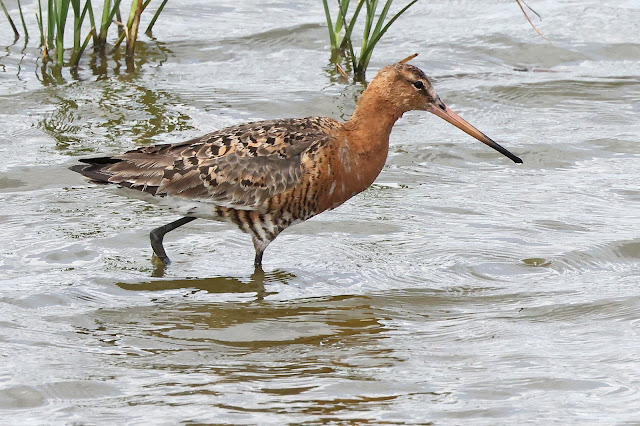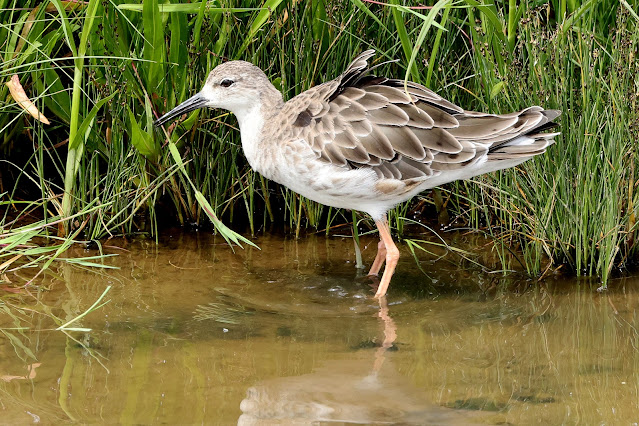26th July 2024
Time for our first visit of the birding autumn to Frampton Marsh and as usual the action started on the mud in front of the visitor centre. Today we were rewarded with performances by an adult and juvenile Lapwing and a juvenile Little Ringed Plover.
Further along the track to the sea wall was a large flock of big white birds including Spoonbills, Little Egrets and this one of many Great White Egrets.
The Spoonbills presumably feed mainly at night as they seem to spend all day sleeping.................
.....................and preening.
On the saltmarsh beyond the sea wall were a couple of Curlews and a Whimbrel. Bit distant for a decent shot but enough to see the eyestripe and line down the crown.
Also very distant, this time on the freshmarsh side of the wall, was a Little Stint. It did spend a lot of its time in cover but occasions would come out on the the exposed mud for a couple of shots. Quite pleased with these considering they were of a 5" long bird 100 yards away.
Further along the bank going towards East Hide a Meadow Pipit was looking a bit damp after its bath........................
.......................and a second bird, probably a juvenile, was calling for food.
And of course Avocets everywhere. What a change from the Reg Partridge days on Havergate Island in the 1950s.
Also good to see some young ones.
And at Frampton Marsh Black-tailed Godwits and Ruff are never far away.
This male Ruff coming out of breeding plumage was particularly smart.
The next sight was a first for me at Frampton. From the sea wall as we approached East Hide there were four large flocks of Knot totally several thousand birds. Certainly the largest flock of Knot that I have ever seen here and especially in this particular location. In this flock there were also a few Dunlin in the foreground.
Also on the freshmarsh was a Common Tern stretching its wings.
Now into the 360 hide and as part of the site management plan the area between the 360 and East Hides was totally drained so no birds here. At the end of the management cycle the area will be seeded to provide food for crustaceans and re-flooded. However, on the other side of the hide a rather magnificent Greenshank was feeding quite close in.
But the star of the show today was the long-staying Lesser Yellowlegs. This North American visitor has now been at Frampton Marsh for 312 days, but has recently been very mobile and spending time in the more remote areas of the reserve. Therefore it can be missing for several days at a time. However today it was performing well on the freshmarsh from the sea wall, and in perfect light.
Also plenty of wing-stretching.
It then climbed up and posed on top of a tussock before flying over the sea wall on to the saltmarsh.
Why can't all birds be this easy!!!!!!















































No comments:
Post a Comment
Note: only a member of this blog may post a comment.